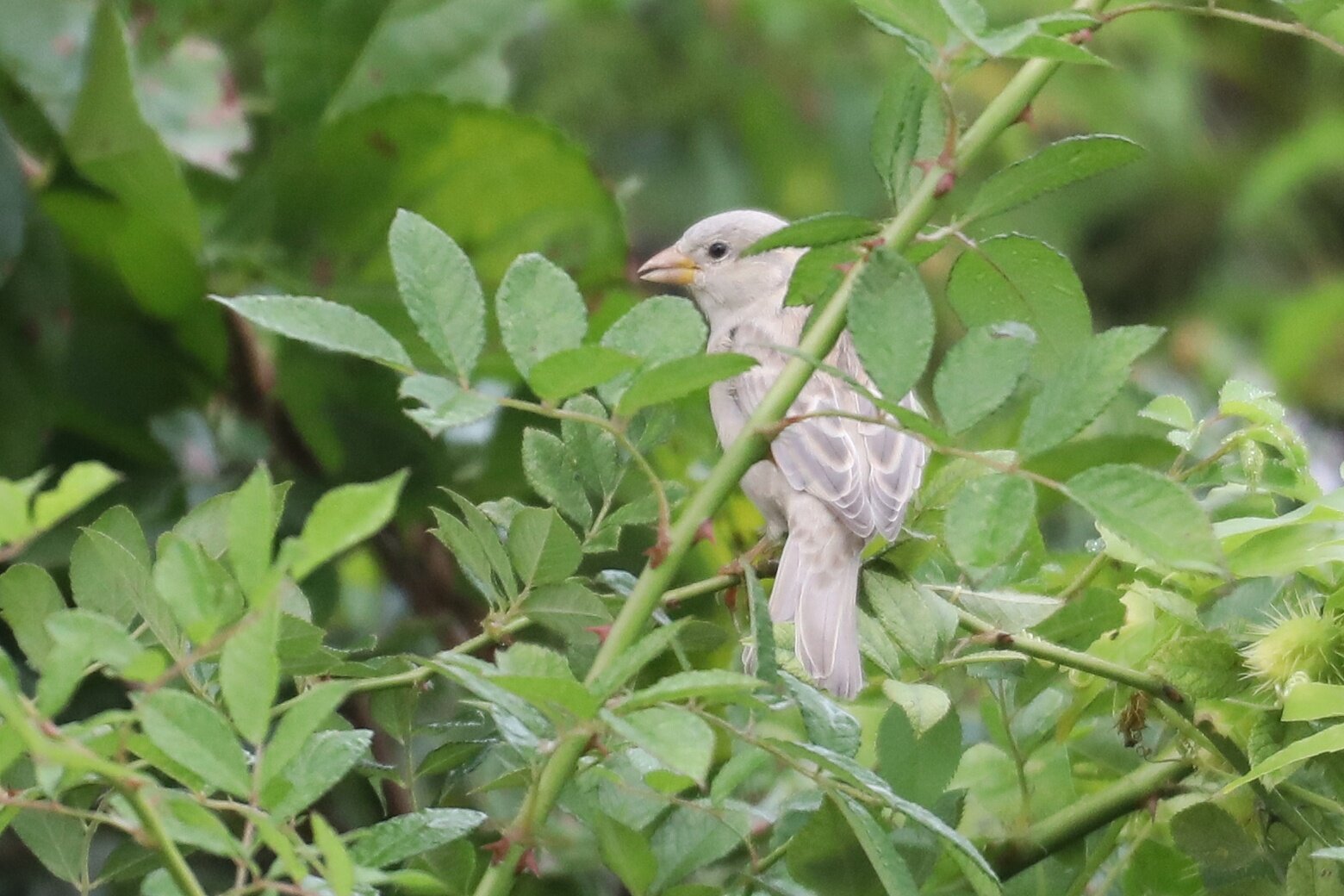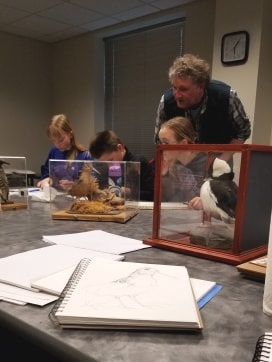by Marion Sprague
In November, Maine birders keep their eyes peeled for reports of rarities. Such was the case for our November 13th outing. We had planned to visit Fort Foster, which is a great habitat for fall migrants, winter sea birds, and just a really nice place to walk and enjoy nature. When an Ash-throated Flycatcher (ATFL) was reported in Biddeford Pool, we pivoted our plans last minute to go on a quest to find this bird. After some last minute logistics, we met at the entrance to East Point Sanctuary and walked to St. Martins Lane where the bird had been seen last.
Ash-throated Flycatchers breed in the Western US generally and winter in Mexico or South America. Maine has a dozen or so state records (meaning it has been seen here) but this is not a bird you’d expect in Maine and a lifer for most (maybe all?) of our MYBC crew. They look quite similar to the commonly seen Great Crested Flycatcher (GCFL) that many of us are familiar with and does breed in Maine. ATFL have a duskier breast than the yellow of our native GCFL, as well as rufous outer tail feathers not seen on the GCFL.
We were a little anxious that maybe the bird had moved on ahead of the heavy rains that day before. We arrived shortly before 8:30AM and scanned the thicket behind the church. We sighted Northern Mockingbirds in a tall tree at the water’s edge. Then we had what we thought might be another mockingbird, but turned out to be a Northern Shrike. A single American Tree Sparrow posed in a nearby shrub. Then we heard what sounded like a flycatcher-esque call, but couldn’t be sure it wasn’t a mockingbird impersonation. As we were getting the shrike in the scope Ian sent out the call—the Ash-throated Flycatcher had been spotted!! Of course, we forgot all about the shrike (well not really) and made a bee-line to see our target bird.
It was foraging between the thicket and a house on the edge of the church property. We got great looks as it sat perched in a nearby tree. We lost sight when it moved behind a house on private property. At this same time a Copper’s Hawk swooped in to the same spot! We all held our breath for either the hawk to reappear with empty talons or to see the flycatcher again. Lucky for us, an all the birders who still had yet to see the flycatcher, the hawk did reappear with empty talons. While we did not see the ATFL was seen later by other birders. (phew!!)
We moved on from the church to scan East Point Sanctuary for sea birds and any early Snowy Owls. Alas, no owls had arrived yet, but we did see a few large flocks of Double-crested Cormorants, Long-tailed Ducks, 12 Common and 5 Red-throated Loons, Surf , White-winged and Black Scoters, and Common Eiders. On our way out we saw a Red-winged Blackbird enjoying a snack at a feeder in a nearby yard.
We tried South Point Sanctuary for the Golden Plover that had been reported there earlier in that morning, but did not spot it. We did see a flock of Sanderlings with a few Semipalmated Plovers mixed into the flock.
We ended the trip with a stop back at the church to try for another look at the flycatcher (no luck). But some of us noticed a small bird zip past us and were able to get on a Palm-Warbler. We’ll celebrate any warbler in November!
All in all everyone felt very happy with our last minute change of plans. You can see the full checklist here: https://ebird.org/me/checklist/S97977123
Keep your eye our for our Dec trip announcement and mark your calendars for the Biddeford Christmas Bird Count on January 1, 2022. MYBC will cover the Old Orchard Beach section again this year.
Happy Birding!





































































































































